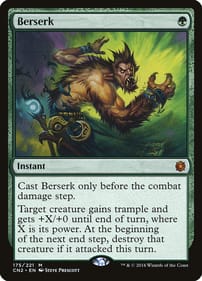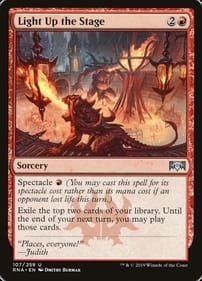July 23rd marked the release of the first official MtG crossover set released as a full set into the standard rotation. There's a lot of discussion happening about what this means for the future of Magic, the Story, the mechanics, and even the game's target demographics.
Dungeons and Dragons: Adventures in the Forgotten realms brings Magic away from its mega plot arcs, and in fact from having story altogether, to give us a kind of "Greatest hits" from WotC's other major IP, Dungeons and Dragons.

The set replaces the usual annual core set, which typically serves as an annual set for replenishing and re-standardizing staples that may not have been able to edge their way in to one of the other sets from the previous year. Core sets are also usually devoid of specialty or new mechanics, to make them a bit more universally accessible to new players,
The core sets don't usually take part in the main story, but still featured characters relevant to Magic's current goings-on. Core set 2019 for example was a chronicle of the origin of Nicol Bolas, while the main plot (War of the Spark) was focused on his plan to conquer Ravnica and steal planeswalker sparks.

The other standard sets have various levels of relation to one another, and usually have some throwbacks to previous sets. For the most part it is possible to draw a single line through every Magic expansion from Antiquities and Legends all the way up through Strixhaven. Even side sets like Conspiracy and Battlebond have Kevin Bacon-esque connections that could connect Kaya to Hanna in 7 steps.

Forgotten Realms will be the first* set in Magic History with absolutely no connection to any existing lore, and in fact represents an even larger fantasy franchise than Magic, with DnD having close to 40 years worth of history and stories built in to it.
AFR Follows the common core set model of having no real internal plot, but it showcases many icons from the current Forgotten Realms setting for DnD. Many iconic figures like Drizz't, Bruenor, the Xanathar, Tiamat, etc. All have cards, but we aren't given any real connection between them. It uses the medium of Magic cards to show a DnD world to people who may never have otherwise experienced it. It also gives DnD fans a cool way to see their favorite game showcased outside the normal setting, and a lot of "Hey, neat!" moments to several references on the cards to common DnD tropes like checking for traps, splitting the party, etc.
We've had a discussion around the office though about how Ellywick Tumblestrum (The only new named character in the set) COULD potentially end up in the Magic-verse, cuz planeswalking? But that's a wait and see scenario.
While the stakes are rather low on a set like this one, since the two games already have quite a bit of crossover between their fanbases and share a fundamentally similar fantasy setting, it does raise a question about the future of Magic.
If this set is popular enough, how long until we see Magic sets based on other external IPs? We've seen the Walking Dead, Godzilla, and we're poised to get even more secondary products later this year. Lord of the Rings and Warhammer 40K are both going to make showings.
With all this attention being shifted away from Magic's story, what does that mean for the characters and the plot? Is WotC looking to slim down the giant web of threads across their planescape? Are they ramping up(down?) towards some kind of end? The basic answer is that it remains to be seen, and I'm not sure how excited I am by it. Part of why Magic succeeded was that it was its own IP, not tied to any existing franchises or bound to a story that wasn't its own. What are your thoughts on this set and how it impacts the future of Magic?
*I ~KNOW~ Arabian Nights isn't tied to the MtG Plot, But it was technically released BEFORE the plot started, so Nya~.






